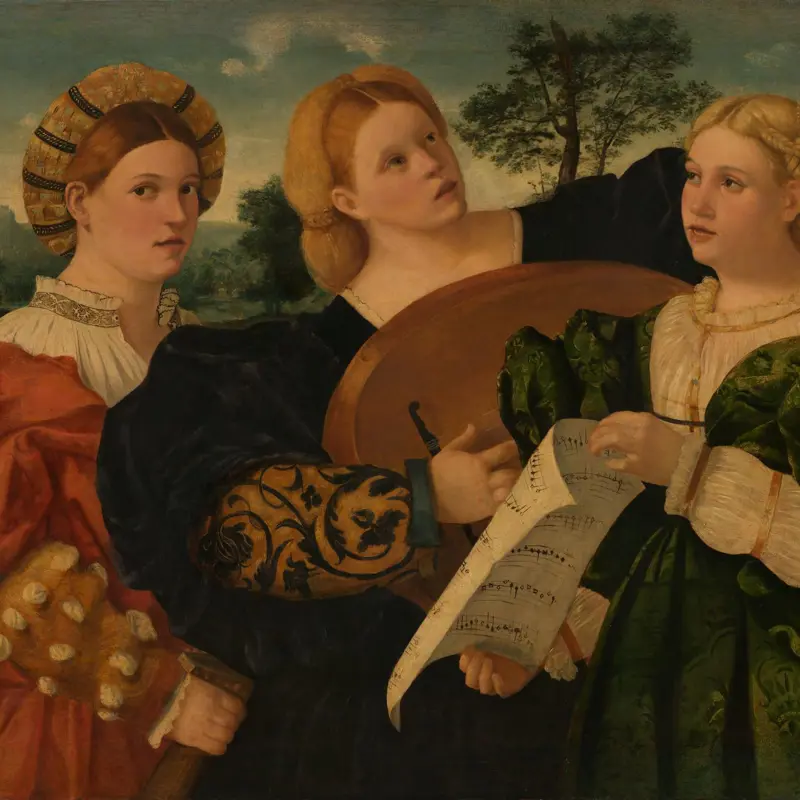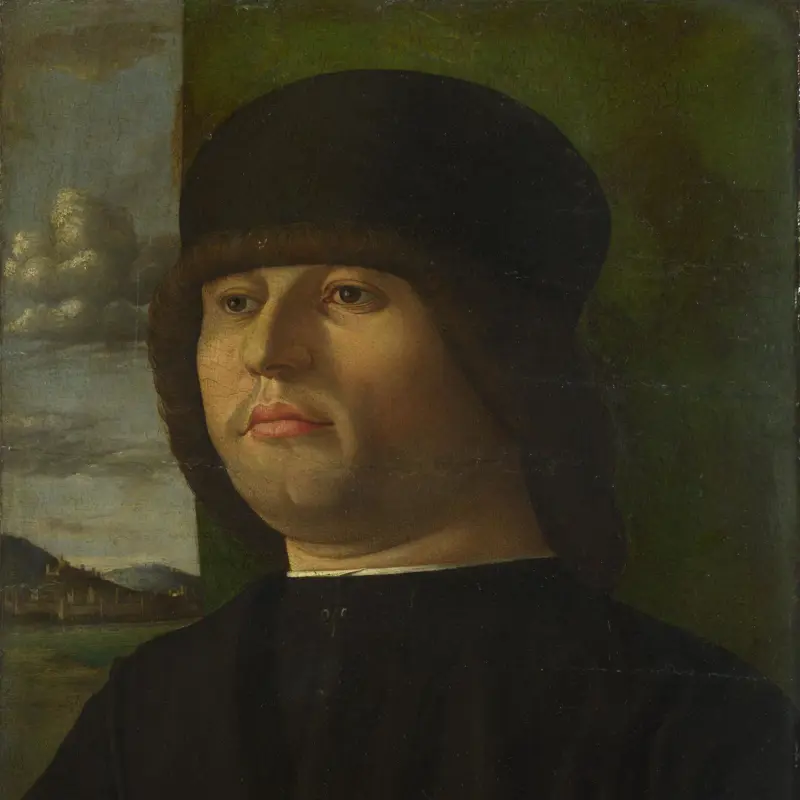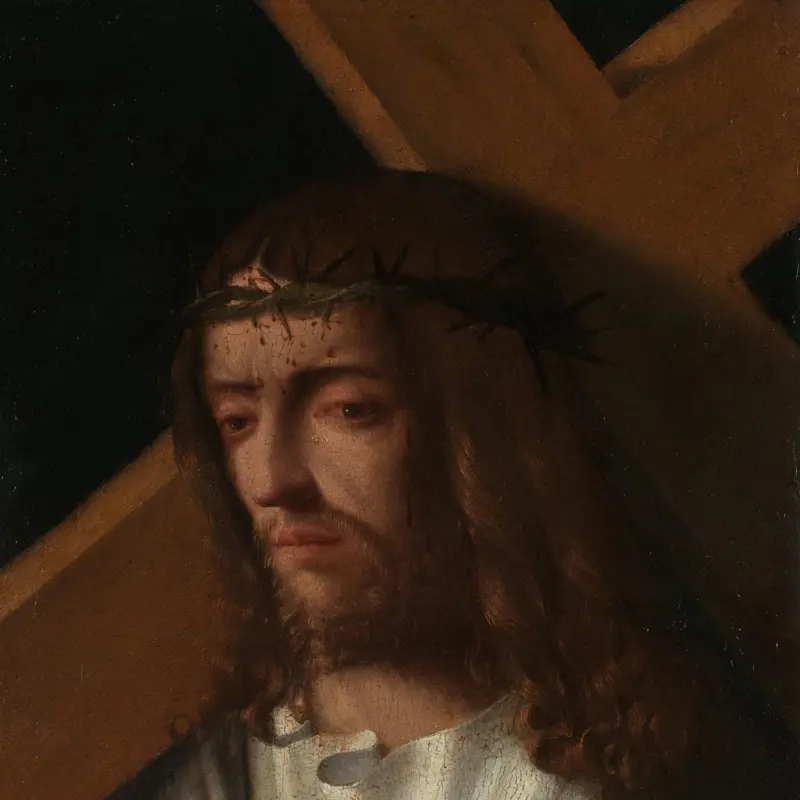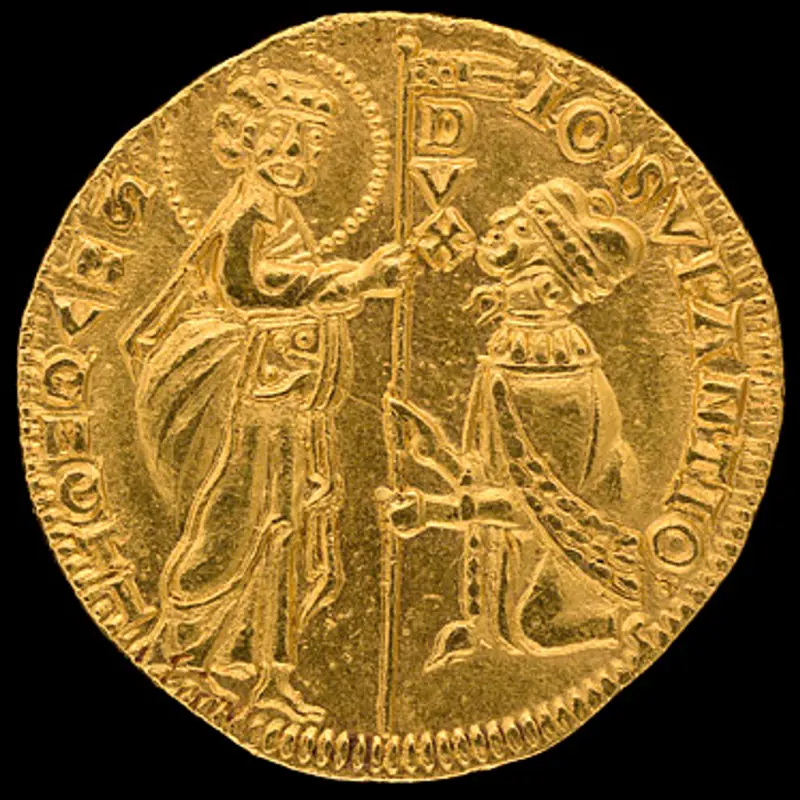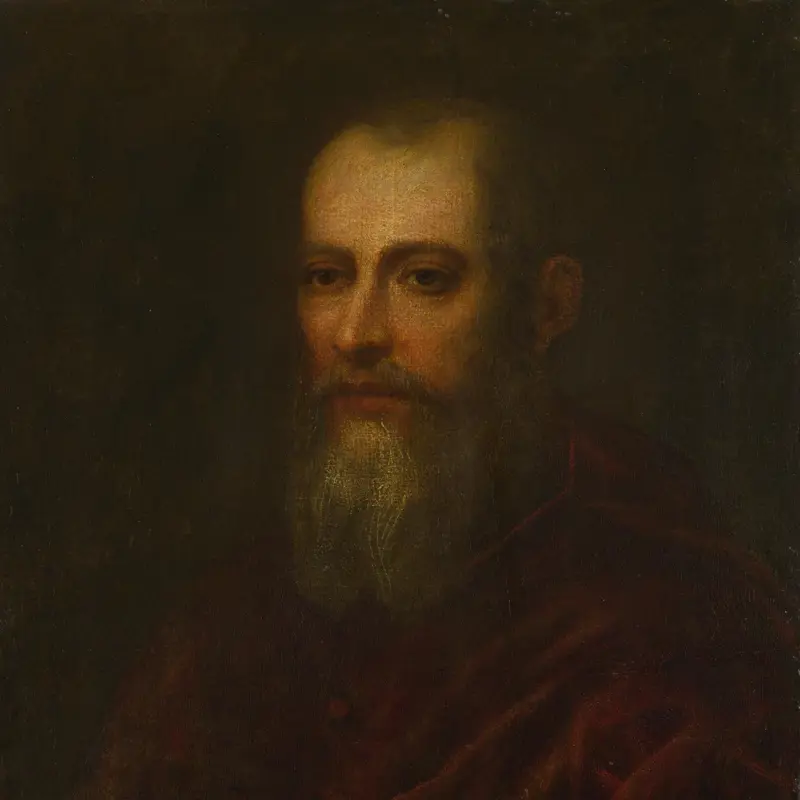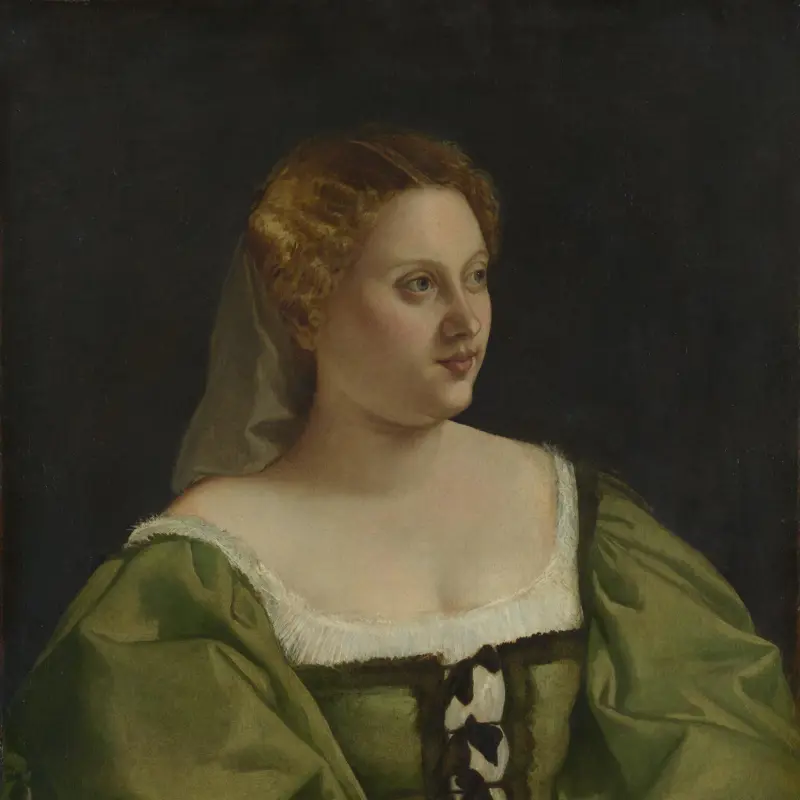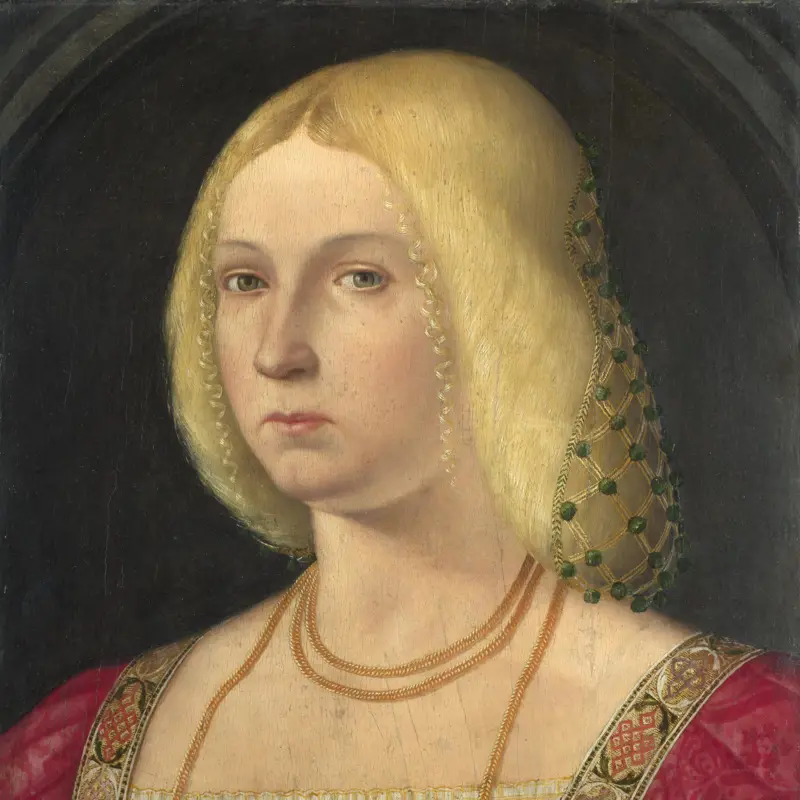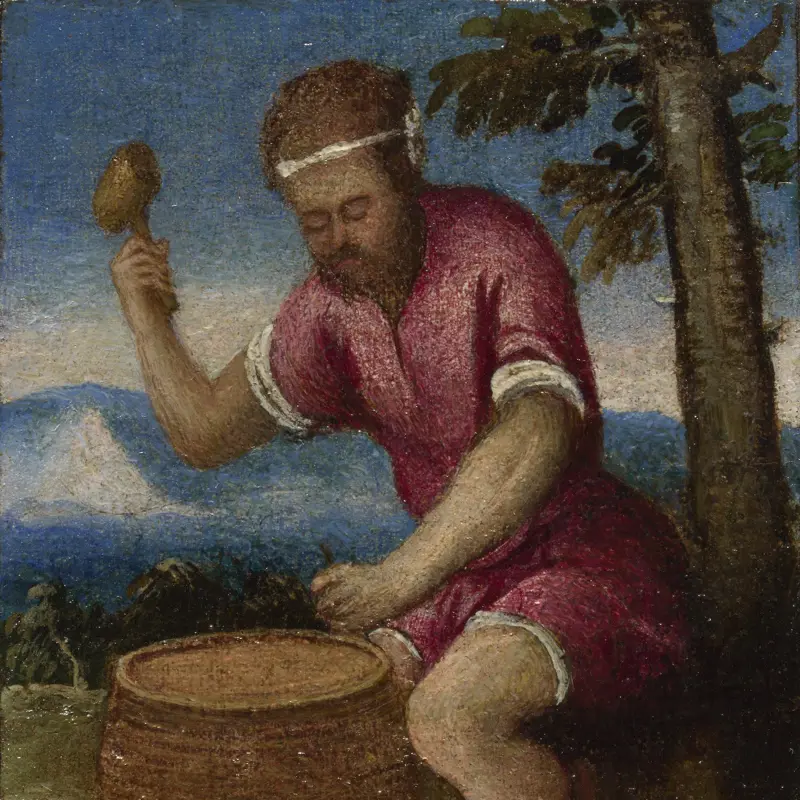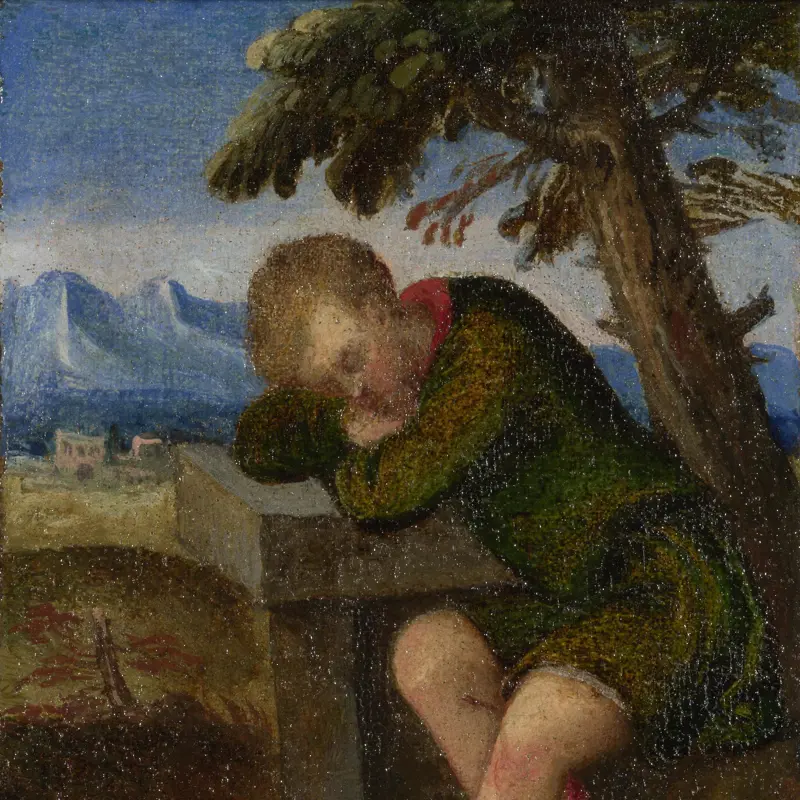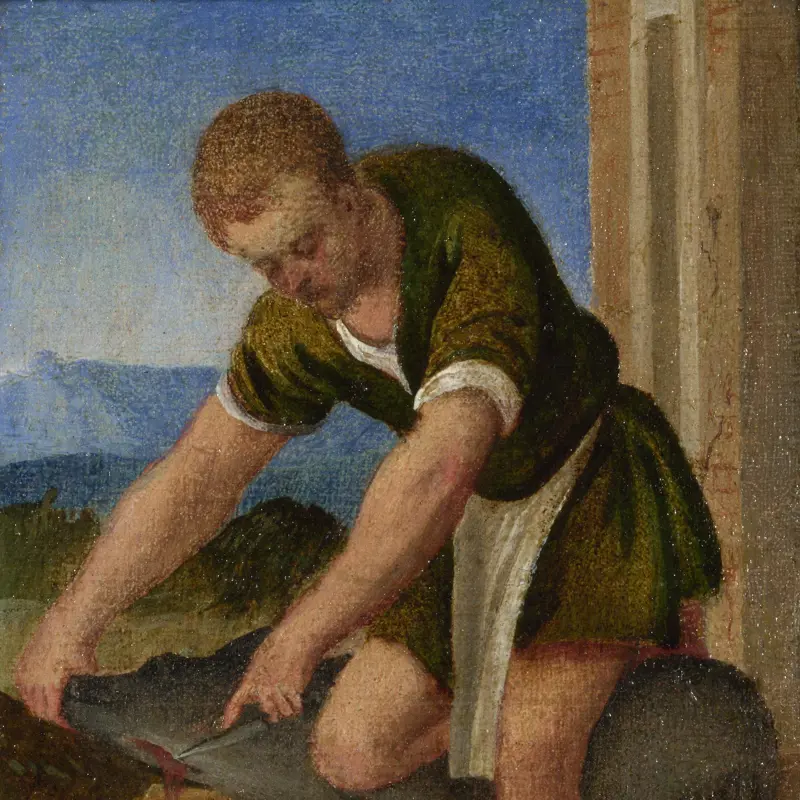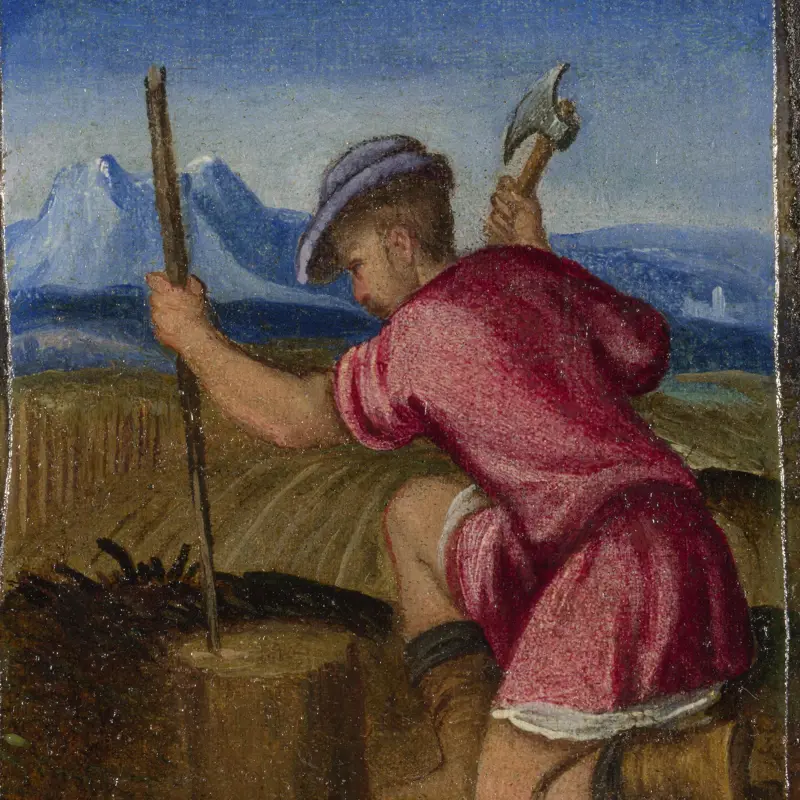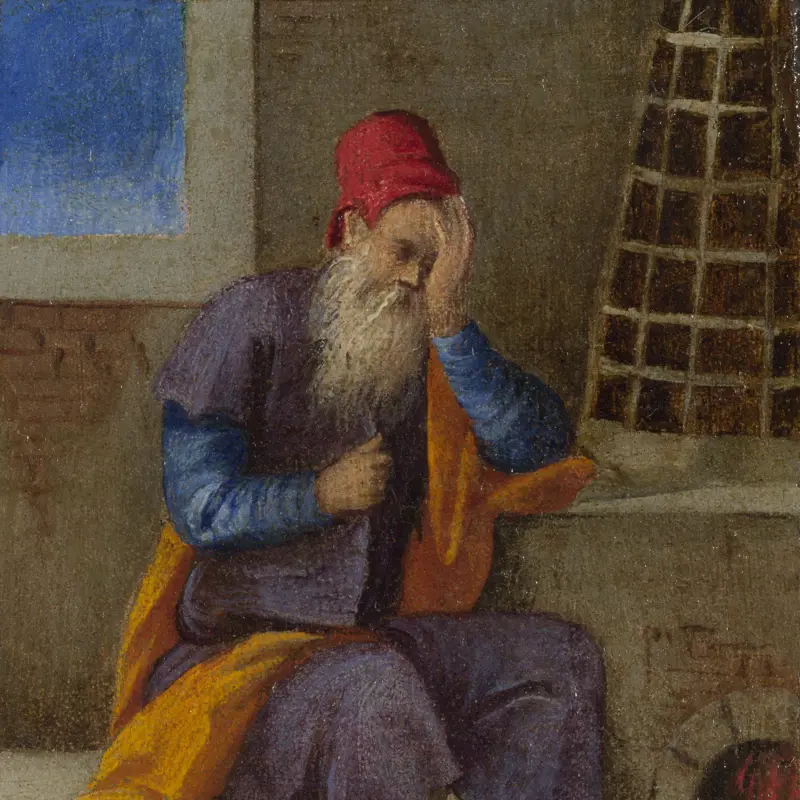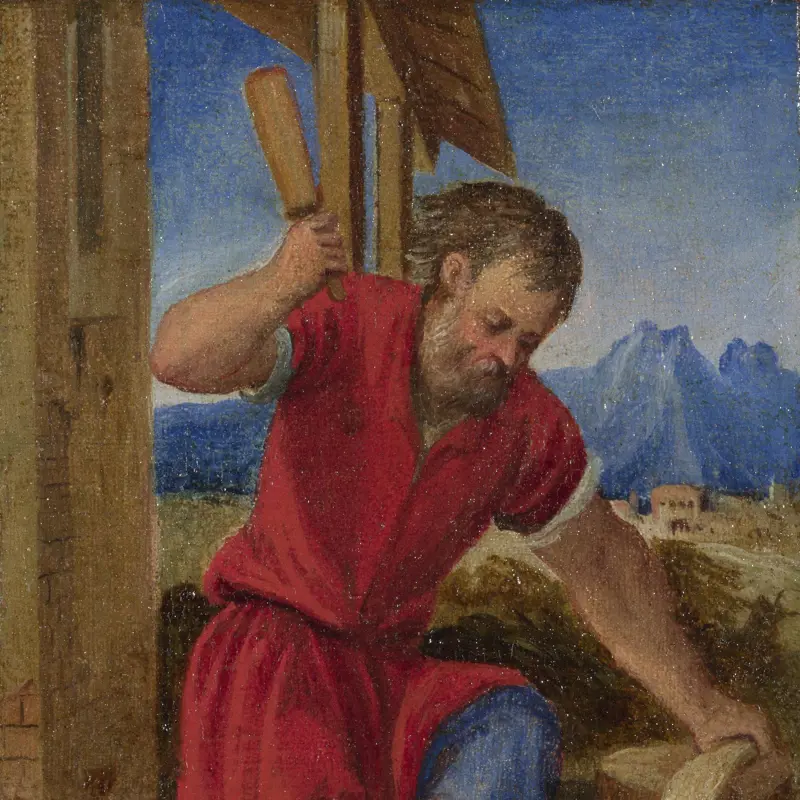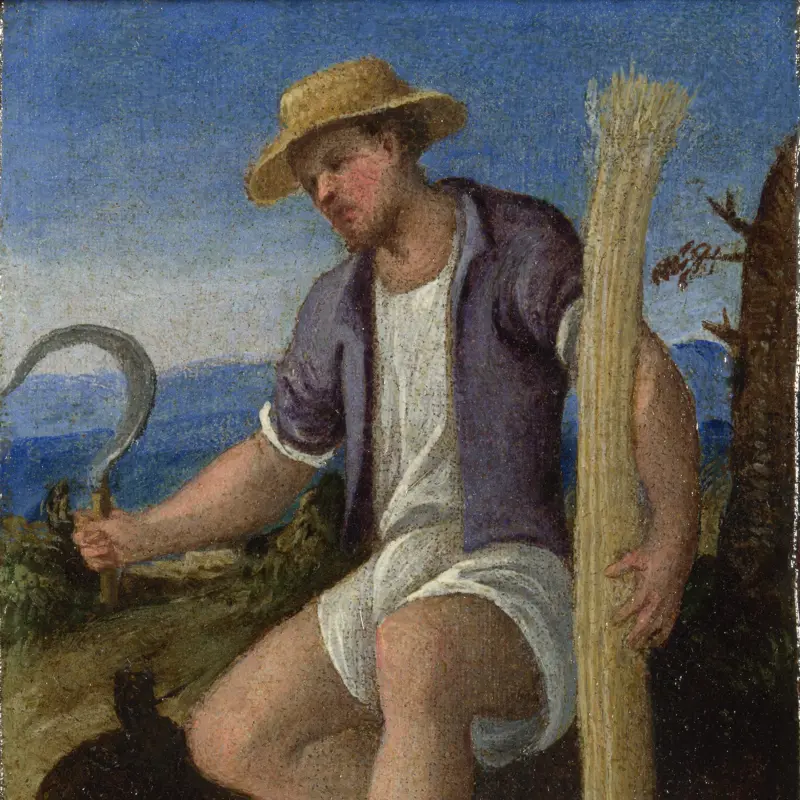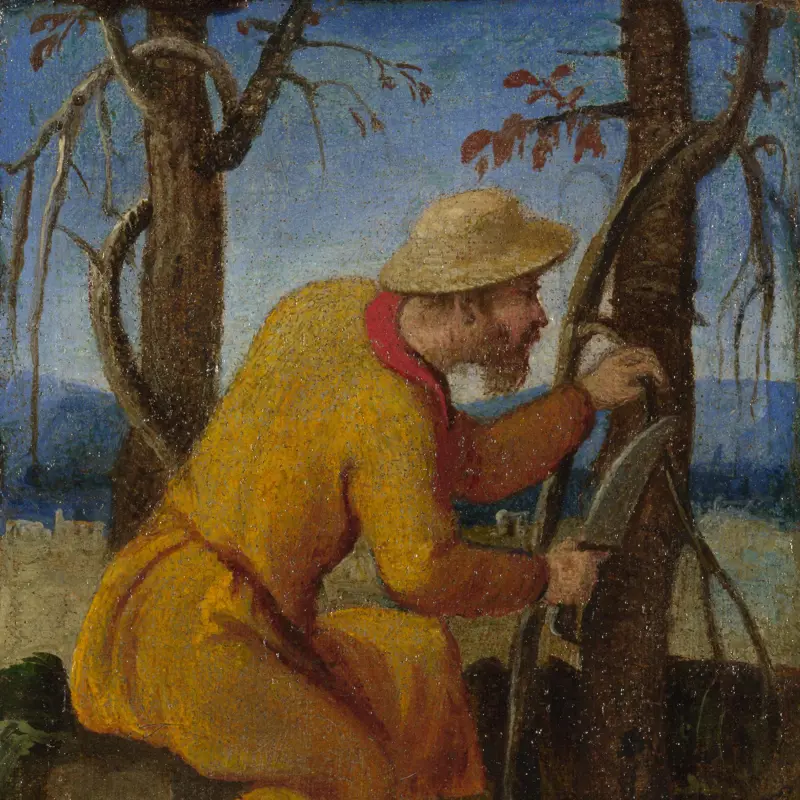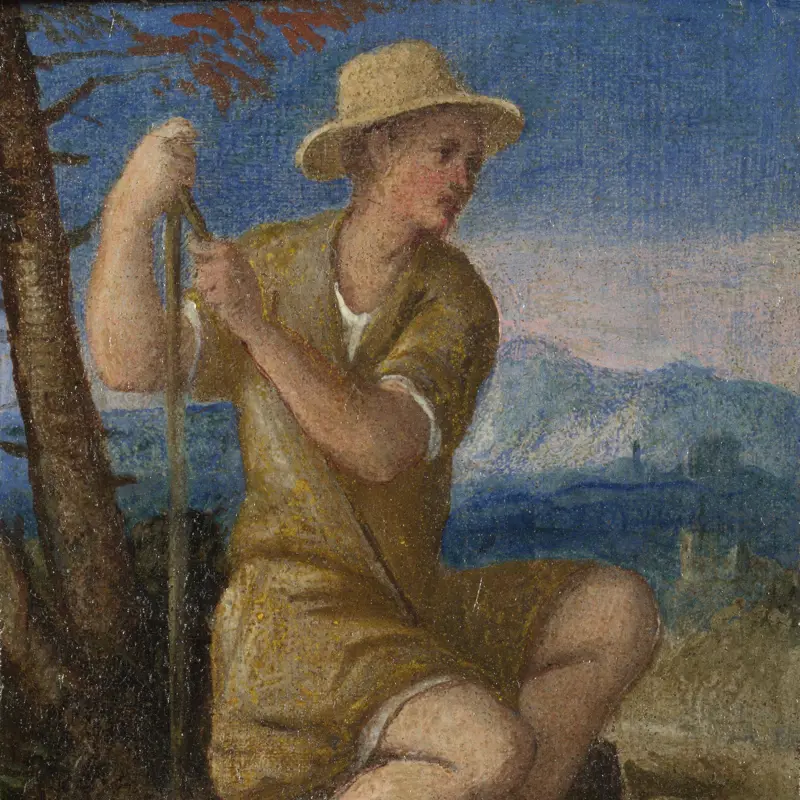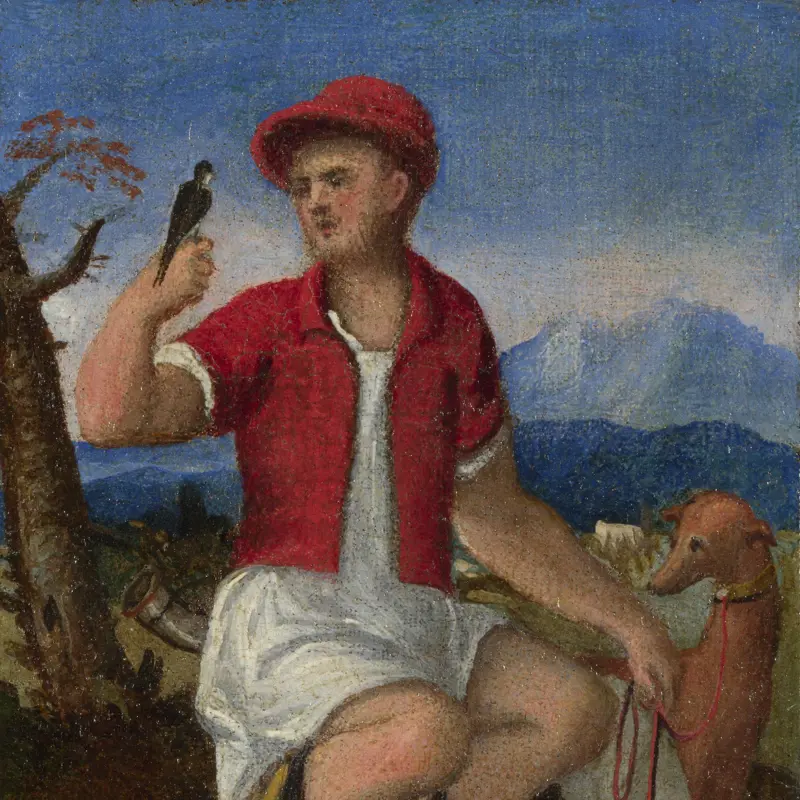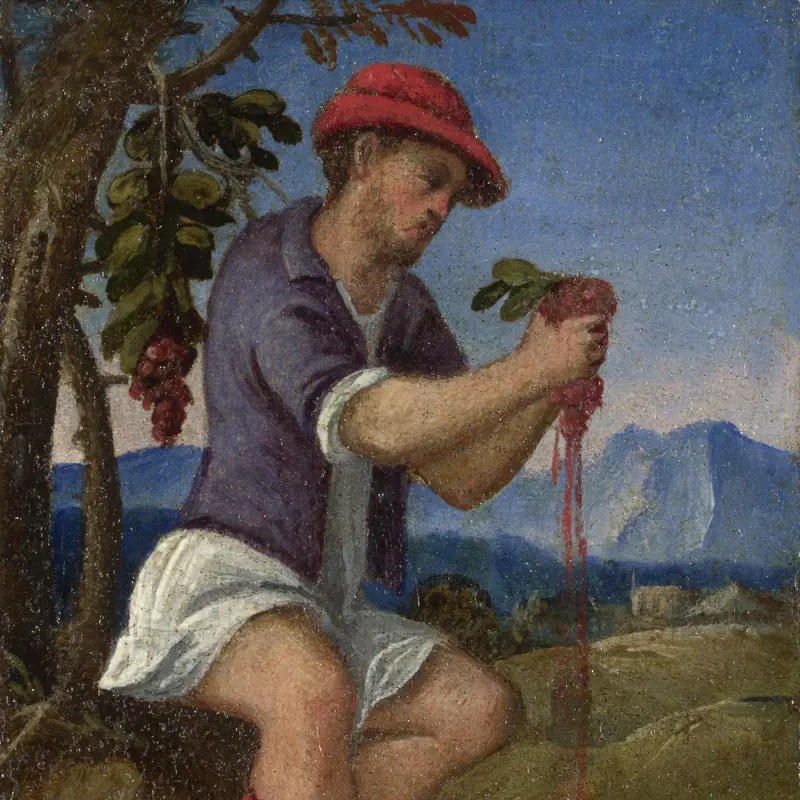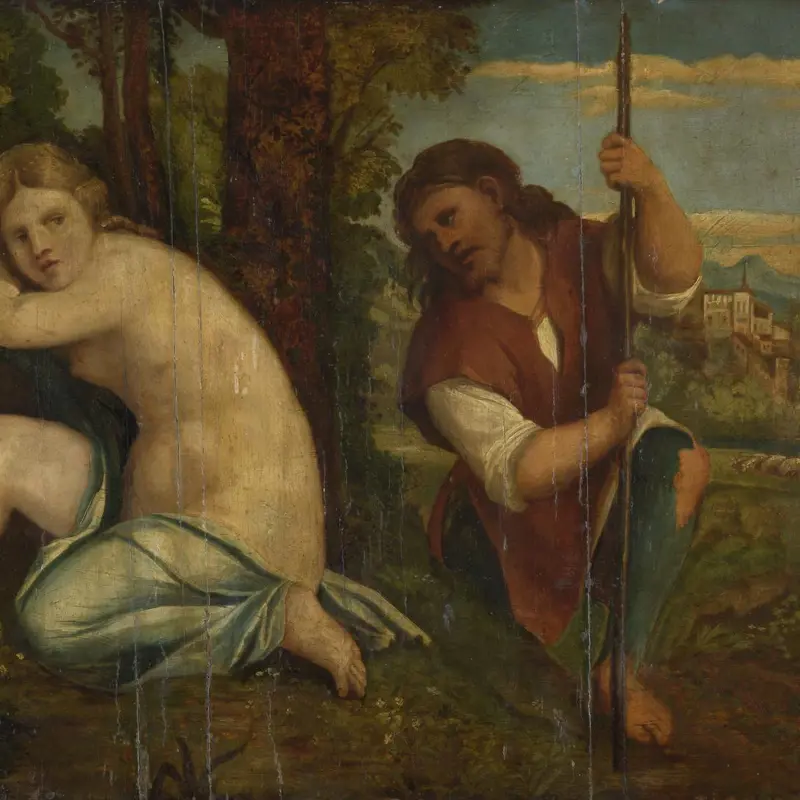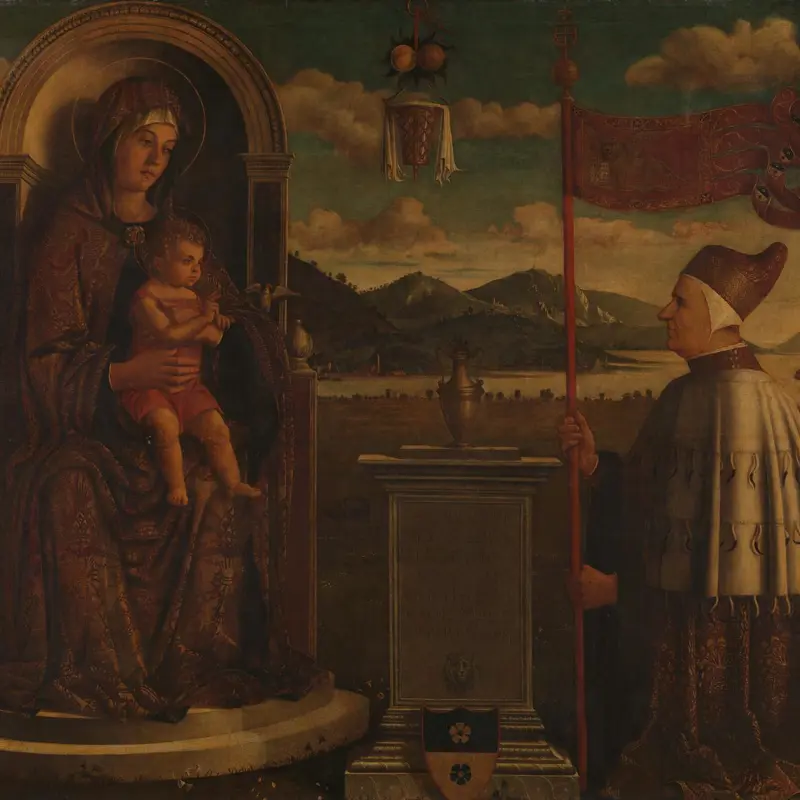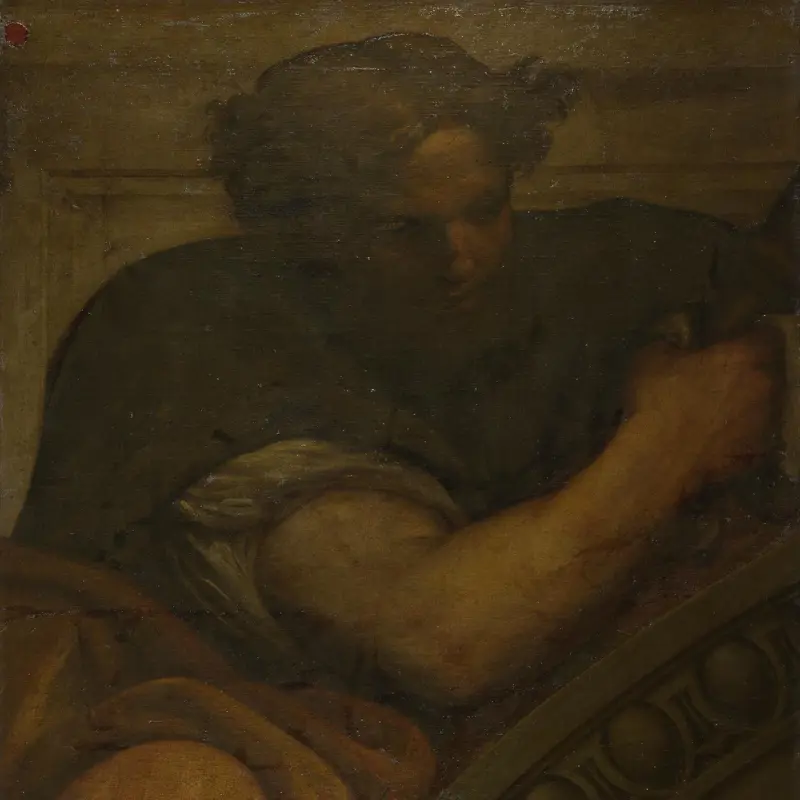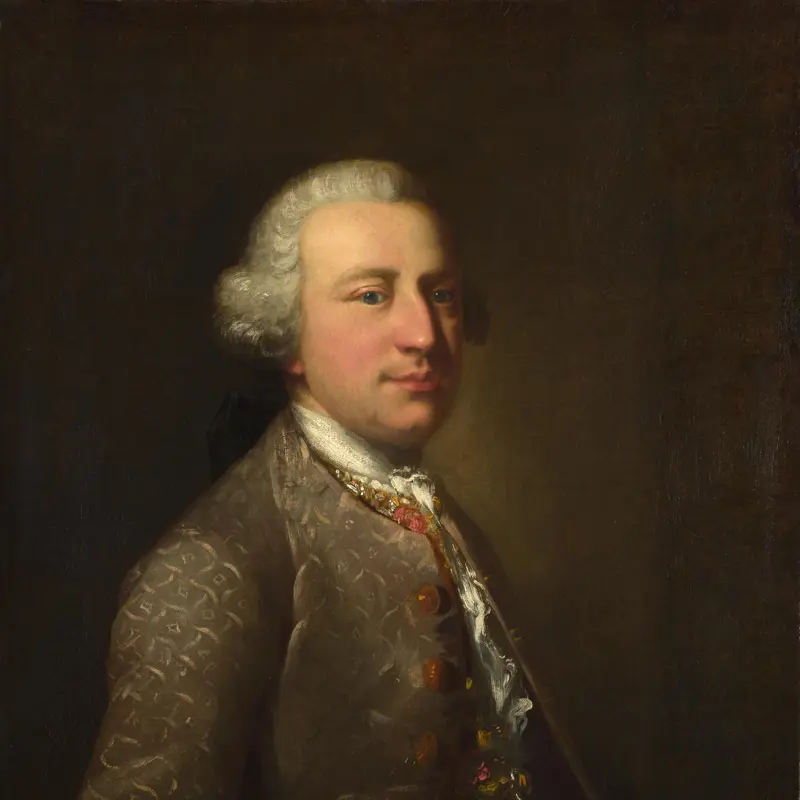Italian, Venetian, 'A Naval Battle', about 1580
About the work
Overview
This is one of a series of five paintings that decorated furniture or wall panelling. The subjects are all military and they may have been painted for the entrance hall of a Venetian palace, where arms and armour were often exhibited.
Foot soldiers are gathered before tents, and a soldier in blue appears to be reporting to a mounted soldier in yellow. In the middle distance, infantry are massed in battle formation. Galleys are being rowed out towards a naval battle and soldiers on the right hurry into a rowing boat.
The other paintings in the series, all in private collections, feature soldiers in ancient Roman costume but with sixteenth-century helmets, lances and swords. In two of the paintings warriors are dressed in long robes and turbans like Ottoman Turks, the chief opponents of Venetian power at that time. The paintings are perhaps not intended to represent specific historical battles, but merely general scenes of warfare.
Key facts
Details
- Full title
- A Naval Battle
- Artist
- Italian, Venetian
- Date made
- about 1580
- Medium and support
- oil on wood
- Dimensions
- 17.1 × 38.9 cm
- Acquisition credit
- Layard Bequest, 1916
- Inventory number
- NG3108
- Location
- Not on display
- Collection
- Main Collection
- Previous owners
Provenance
NG 3108 is first recorded in the celebrated collection of more than 450 paintings that was formed by the Marchese Girolamo Manfrin, tobacco magnate and financier, after he purchased Palazzo Venier in Venice (formerly Palazzo Priuli, Fondamenta Venier, Cannaregio, no. 342) in 1787. Manfrin was advised from 1793, if not earlier, by Giovanni Battista Mingardi and Pietro Edwards. A manuscript list of the paintings compiled by the latter in the 1790s includes a group of four pictures by Bonifazio which must correspond with these.
After Girolamo’s death in 1802 the collection was inherited by his son Pietro, who died in 1835. It then passed to Pietro’s sister Giulia Giovanna, who had married Giovanni Battista Plattis in 1800. On her death in 1849 the collection became the joint property of her children, the Marchese Antonio Maria Plattis (1802–1876) and the Marchese Bortolina (or Lina) Plattis, widow of Baron Sardagna. Negotiations to sell the entire collection commenced in 1851, when a manuscript catalogue was prepared in which these four paintings are numbers 32–35 in Stanza A, attributed to ‘Bonifazio’ and as ‘Storia romana’.
A number of major works were sold from the Manfrin collection in 1856, and later in that year a catalogue of the remaining paintings was printed in which the group is 22, 23, 29, 30, attributed as before. A division had been contrived by 1871, when Antonio Maria’s portion was auctioned in Paris on 13 and 16 May – including, presumably, no. 2 of the group. The remaining 215 paintings in Palazzo Manfrin, belonging to the Marchesa Lina, were published in a catalogue dated 1872, in which the three others in the group feature as 22, 23 and 24. The numbers endorsed on NG 3108 reveal that it was no. 34 in 1851, no. 23 in 1856, and no. 24 in 1872. It was bought by Henry Layard in October 1880 for 100 lire and was part of his bequest which arrived in the National Gallery in 1916.
Nos 3 and 4 in the sequence (nos 22 and 23 in the Manfrin catalogue of 1872) were later recorded in Dr Szeben’s collection in Budapest. No. 2 was in the Oscar Anderson sale at Sotheby’s, London, on 16 November 1949, lot 40, and then again at Sotheby’s on 30 June 1964, lot 39, and was exported soon afterwards. It is said to have been labelled ‘A30’, which was very probably a misreading of ‘A32’. No. 5 in the group, which seems not to have been in the Manfrin collection, was lot 7, attributed to Schiavone, in the sale of Archibald Russell’s collection at Sotheby’s, 9 May 1929.
Additional information
Text extracted from the ‘Provenance’ section of the catalogue entry in Nicholas Penny, ‘National Gallery Catalogues: The Sixteenth Century Italian Paintings’, vol. 2, ‘Venice 1540–1600’, London 2008; for further information, see the full catalogue entry.
Bibliography
-
1959Gould, Cecil, National Gallery Catalogues: The Sixteenth Century Venetian School, London 1959
-
1987Gould, Cecil, National Gallery Catalogues: The Sixteenth Century Italian Schools, London 1987
-
2001
C. Baker and T. Henry, The National Gallery: Complete Illustrated Catalogue, London 2001
-
2008Penny, Nicholas, National Gallery Catalogues: The Sixteenth Century Italian Paintings, 2, Venice, 1540-1600, London 2008
About this record
If you know more about this work or have spotted an error, please contact us. Please note that exhibition histories are listed from 2009 onwards. Bibliographies may not be complete; more comprehensive information is available in the National Gallery Library.

